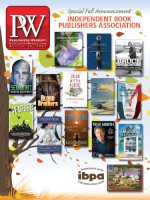In Geoffrey Girard’s new book Cain’s Blood, serial killers are cloned in a military-funded scientific program. The author is simultaneously publishing a YA version of the story entitled Project Cain, told from the perspective of one of the clones.
How did the concept of simultaneous publication of an adult and YA title develop?
My agents at Foundry Literary + Media suggested it. I'd sold an adult novella about cloned serial killers back in 2007, and thought it could be turned into an interesting YA novel. I submitted that YA novel to Foundry seeking representation, and they liked the writing but wanted me to give a more-traditional adult thriller a try. I subsequently submitted the adult thriller and they brought me on as a client. During that same phone call, Foundry asked if I'd have any interest in trying a YA version of the story from the main teen character's point of view, with the plan of selling both at the same time. Both books went to auction, and Simon & Schuster was feeling equally creative: Touchstone ended up buying Cain’s Blood, and Simon & Schuster Books For Young Readers picked up Project Cain.
Do the two Cain books share a theme?
Both books are a study in nature/nurture, and which is the most important. In Project Cain, Jeff Jacobson is a teen who's just learned he's the clone of Jeffrey Dahmer. Most teen novels are about the struggle for finding yourself. Jeff now knows exactly who he is, which could be much worse. In Cain’s Blood, Castillo is a recently-retired war veteran, still wrestling with post-traumatic stress disorder. His nurture has been 20 years of war, and while hunting down these bad guys, he's wondering if that's a nurture he can ever escape.
Did anything surprise you in writing them?
The research I came upon. I had assumptions on cloning laws and capabilities that were wrong. However, I was mostly surprised by the things the U.S. military's scientists have been up to. 60 years of lies, murder, and macabre human rights violations.
How did you approach the science of the story-how much is science, and how much fiction?
My first books were story collections for young readers which combined history, folklore and fiction. I learned quickly that if you ask two experts on anything a question, you get three answers. Research has always been my favorite part of writing. I got my hands on dozens of the latest books on cloning, military science, the genetics of violence and males, and PTSD and supplemented those books with hot-of-the-press articles. Where I could find agreement, I always used that. I never intentionally fudged the science, but realized there's always another article, or expert, or reader lurking in the wings with info different from what I found.



 Volume 260
Issue 34
08/26/2013
Volume 260
Issue 34
08/26/2013





